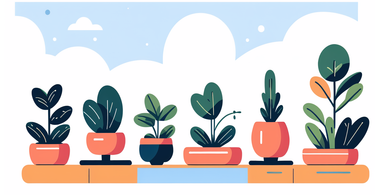Understanding the Importance of Custom Signage in Home Improvement
The Role of Signage in Property Marking
Custom garage signs play a crucial role in property marking. They help identify your space and make it easy for visitors to find your home. A well-designed sign can serve as a landmark, guiding people to your property. It's not just about aesthetics; it's also about functionality. Proper signage can prevent confusion and save time for delivery drivers and guests alike. Moreover, it can be a useful tool in emergencies, helping first responders locate your home quickly.

How Custom Signs Enhance Curb Appeal
Custom signs are more than just markers; they're an extension of your home's personality. A thoughtfully designed sign can significantly boost your property's curb appeal. It adds a touch of sophistication and shows attention to detail. Custom signs can complement your home's architecture and landscaping, creating a cohesive look. They can be designed to match your home's color scheme or stand out as a focal point. Either way, they contribute to the overall aesthetic of your property.
Personal Expression and Identity Through Signage
Your garage sign is an opportunity for personal expression. It's a chance to showcase your style and creativity. Custom signs can reflect your hobbies, interests, or profession. They can display your family name, a meaningful quote, or a unique design. This personal touch makes your home truly yours. It sets your property apart from others in the neighborhood. A custom sign can be a conversation starter and a way to connect with neighbors and visitors.
The DIY Approach to Garage Signage
Choosing the Right Materials for Your Sign
Selecting the right materials is crucial for creating a durable and attractive garage sign. Consider these options:

- Wood: Classic and versatile, suitable for rustic or traditional styles
- Metal: Durable and modern, great for contemporary designs
- Acrylic: Lightweight and customizable, ideal for illuminated signs
- PVC: Weather-resistant and affordable, perfect for outdoor use
- Stone: Elegant and long-lasting, best for high-end, permanent installations
Choose a material that complements your home's exterior and can withstand local weather conditions. Factor in maintenance requirements and longevity when making your decision.
Step-by-Step Guide to Creating Your Sign
Creating your own garage sign can be a rewarding project. Follow these steps:
- Design your sign: Sketch your ideas or use graphic design software
- Gather materials: Purchase your chosen material, paint, and tools
- Cut the sign: Use appropriate tools to shape your sign
- Sand and prep: Smooth the surface for painting or engraving
- Apply base coat: Paint or stain the sign as desired
- Add lettering or design: Use stencils, paint, or vinyl decals
- Apply protective coating: Seal the sign to protect it from weather
- Install hardware: Attach hooks or brackets for hanging
Take your time with each step to ensure a professional-looking result.
Tips and Best Practices for DIY Signage
To create a successful DIY garage sign, keep these tips in mind:
- Plan your design carefully before starting
- Use weather-resistant materials and finishes
- Ensure text is large and legible from a distance
- Consider lighting for nighttime visibility
- Double-check measurements and spelling
- Use contrasting colors for better readability
- Keep the design simple and uncluttered
- Test different placements before final installation
Remember, practice makes perfect. Don't be afraid to make multiple attempts to achieve your desired result.
Custom Solutions and Professional Installation
When to Consider a Professional Approach to Signage
While DIY projects can be fun, sometimes it's best to hire a professional. Consider professional help if:

- You want a complex design or illuminated sign
- You're not confident in your DIY skills
- You need a large or heavy sign that requires secure installation
- You want a high-end, custom-fabricated sign
- Local regulations require professional installation
- You're short on time or tools
Professional sign makers have the expertise and equipment to create durable, high-quality signs. They can also ensure your sign complies with local codes and regulations.
Selecting a Custom Signage Provider
Choosing the right provider is key to getting a great custom garage sign. Here's what to look for:
- Portfolio of past work
- Customer reviews and testimonials
- Experience with residential signage
- Range of materials and design options
- Warranty or guarantee on their work
- Clear communication and willingness to collaborate
- Competitive pricing and transparent quotes
Don't hesitate to ask for samples or mock-ups before committing to a provider. A good sign maker will be happy to work with you to achieve your vision.
The Installation Process and Maintenance of Custom Signs
Professional installation ensures your sign is securely and correctly mounted. The process typically involves:
- Site assessment to determine the best location
- Preparation of the mounting surface
- Secure attachment of the sign using appropriate hardware
- Electrical work for illuminated signs
- Final adjustments and clean-up
After installation, proper maintenance will keep your sign looking great for years. This may include:
- Regular cleaning with appropriate products
- Touching up paint or finishes as needed
- Checking and tightening hardware
- Replacing bulbs in illuminated signs
- Trimming nearby vegetation to keep the sign visible
With proper care, your custom garage sign will continue to enhance your property and express your personal style for years to come.
